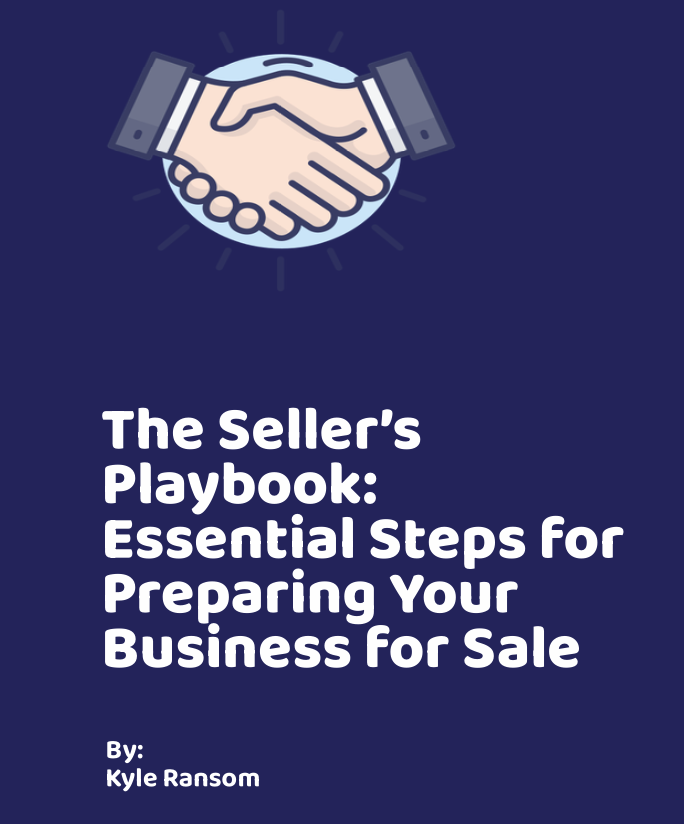
Why every entrepreneur needs an exit strategy for small business
Most small business owners are so head down, focused on day-to-day operations, that they forget the most important KPI of all: how this thing ends. If you’re one of them, you’re not alone. But planning your exit strategy for small business isn’t just something to do when you’re ready to sell—it’s something you refine over time.
Whether you’re 12 months out or 12 years away, the key is understanding your endgame now. Will you sell to a third party? Pass the torch to a family member? Or arrange a management buyout? Each path has trade-offs, and your eventual exit will reflect decisions you start making today.
So let’s break it down. In this guide, I’ll walk you through the essentials of crafting a small business exit strategy that works in good times, bad times, and even unexpected times.
If the phrase “exit strategy” makes you think of investor presentations and not your Tuesday staff meeting, don’t worry. You don’t need to be a Wall Street strategist to get this right. You just need a simple, intentional plan tailored to your goals.
Let’s take a look at how you can build toward a more profitable, stress-free exit—on your terms.
What is an exit strategy, really?
An exit strategy is simply your plan to leave your business—profitably and on your own terms. It doesn’t have to be complicated, but it does have to be intentional. For small business owners, this includes understanding timing, transition, taxes, and talking to the right buyers (or successors).
Your exit strategy could be selling to a competitor, handing it off to a family member, or arranging an internal buyout with key employees. But without a strategy in place, you’re more likely to wind down without maximizing value—or worse, scramble under duress.
Think of it this way: if you were handing over your car keys, you’d want to clean it up, fill the tank, and know who’s taking the wheel. Your business deserves the same care.

Key components of an exit strategy for small business
Most exit strategies for small businesses share a few common ingredients. These include defining your personal goals (timing, income needs, legacy priorities), analyzing your financials (including valuation and profitability trends), and choosing your ideal exit type.
Here’s a short list of what every business owner should bake into their plan:
- Clear personal and business goals
- Up-to-date valuation and financials
- Preferred exit option (sale, succession, buyout)
- Legal/tax implications and preparation
- Communication strategy with stakeholders
Great exits aren’t the result of luck—they’re the product of intention and smart positioning. If you’re starting to think about your exit strategy for small business, now is a great time to evaluate these core elements.
Popular exit options for small business owners
When it comes to exiting, one size doesn’t fit all. But knowing your top options makes mapping your route far easier. The most common exit paths for small business owners include:
- Third-party sale: Selling to an outside buyer or investor group, usually after an in-depth valuation and due diligence period.
- Succession: Passing the business to a family member or key employee, often using installments or seller-financed terms.
- Asset sale or shutdown: Winding down operations and selling core assets. Less ideal, but necessary in some cases.
Understanding your market, your business strengths, and your financial needs will point you toward the most strategic path. Every option has pros and cons, but your goal will shape the right one to pursue.
Preparing your business for a smooth transition
Deciding your exit route is one thing—executing it smoothly is another. The best way to boost your sale price and minimize headaches? Start tidying up now. Prep includes cleaning up your books, tightening up your processes, and even documenting workflows.
Most buyers (and successors) want a business that runs well—without you. That means documenting SOPs, reducing owner dependency, and ensuring steady financial performance across 12–36 months. Simplified operations = higher value.
Also, consult experienced advisors early. Talk with your CPA, a business broker, or a deal-side expert to keep the transition tax-smart and headache-free. The earlier you plan, the easier your exit will be.
What is the best exit strategy for a small business?
The best exit strategy largely depends on your goals, timeline, and the readiness of the business. For some, an external sale is ideal; for others, internal transfers or family succession make more sense. Choose based on what will serve your financial and lifestyle goals long term.
How long should I plan ahead for a business exit?
I recommend beginning serious exit planning at least 2–5 years before you actually want to exit. This time allows you to increase profitability, reduce risks, and boost valuation—making your business more attractive to buyers or successors.
Do I need an exit strategy even if I’m not planning on selling?
Yes! Even if you’re not looking to sell today, life can change overnight. Having an exit strategy prepares you for unexpected offers, health issues, or market shifts. It’s a form of insurance, and a strong business always benefits from that preparedness.
What professionals should help with my exit strategy?
You’ll likely want a CPA, an attorney, and possibly an M&A advisor or business broker. These pros can help with valuation, taxes, deal structuring, and legal compliance to make your exit less stressful and more profitable.
How do I calculate the value of my small business?
There are several methods, but most small businesses are valued based on a multiple of their Seller’s Discretionary Earnings (SDE). Getting a formal valuation by a professional can provide clarity and assist in negotiations during the exit.
Putting your exit strategy for small business into action
So, where do you go from here? Simple: start. Even if you feel like your exit is “someday,” you now know that waiting too long can cost you. The sooner you map your exit strategy for small business, the easier it is to adapt, improve, and optimize when it counts.
Don’t underestimate the power of intention. Whether your path leads to a sale, succession, or wind-down, having a playbook ensures you can exit confidently—and cash out meaningfully. Remember, the goal isn’t to just sell the business. It’s to build a life-changing payday and a legacy others will value.
Need help crafting your perfect exit? Our team specializes in creative, structured SBOs tailored for everyday entrepreneurs. Let’s talk about your goals and what a great finish looks like for you.
Explore more at the SBA’s official Business Selling resources if you’re still weighing your options.


No responses yet